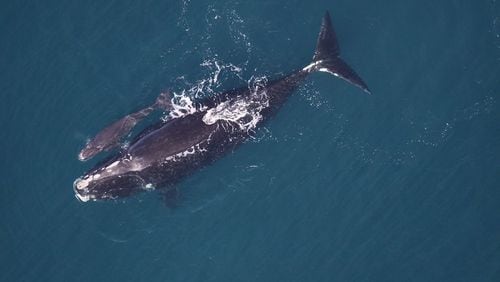Endangered North Atlantic right whales are departing now from their winter calving grounds off the coasts of Georgia and North Florida, slowly swimming back up the East Coast to summer feeding grounds off New England and Canada.
Sadly, as they head north, the massive mammals are coming off perhaps their most dismal calving season since biologists started tracking them in the 1980s. No new whale calves have been spotted this season, and biologists don’t expect any to show up at the last minute.
This low-point season follows below-average calving totals since 2012. In addition, the whales are facing deadly danger from entanglements in fishing nets and collisions with ships. Climate change is another potentially serious threat.
In short, without a rebound, the whale’s days may be numbered.
Georgia designated the North Atlantic right whale as its official state marine mammal in 1985 — shortly after biologists discovered that the species’ only known calving grounds lay within 15 miles of the Georgia and north Florida coastlines.
The whales spend most of their time in their northern feeding grounds but beginning around November several head south to give birth.
Stretching up to 55 feet long and weighing more than 60 tons, the North Atlantic right whale is one of the world’s largest animals. The species belongs to a class of animals known as baleen whales (as opposed to toothed whales). Up to 270 baleen plates hang from each side of a right whale’s upper jaw. As the animal swims underwater with its mouth open, the plates filter rice-grain-size copepods and other food from the water.
During the whaling era, generations of right whales were relentlessly hunted almost to extinction for baleen and oil. After whaling’s decline, the animals had a limited rebound. Now, they once again face oblivion because of the new threats.
IN THE SKY: From David Dundee, Tellus Science Museum astronomer: The moon will be full tonight. Venus and Mercury are low in the west at dusk. Jupiter rises out of the east just before midnight and will appear near the moon Tuesday night. Mars and Saturn rise out of the east about an hour after midnight and will appear close together Sunday night. Saturn will appear near the moon Friday night.
About the Author






